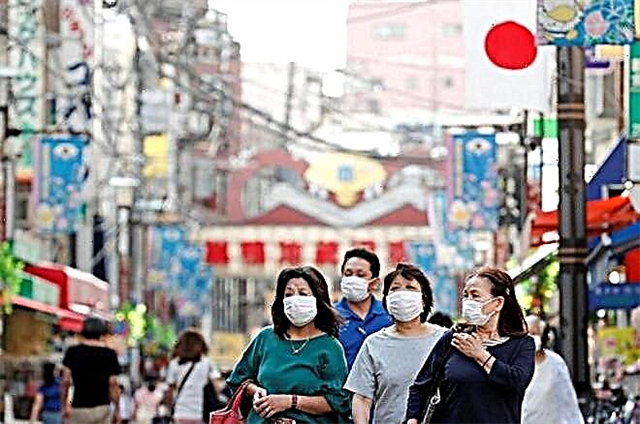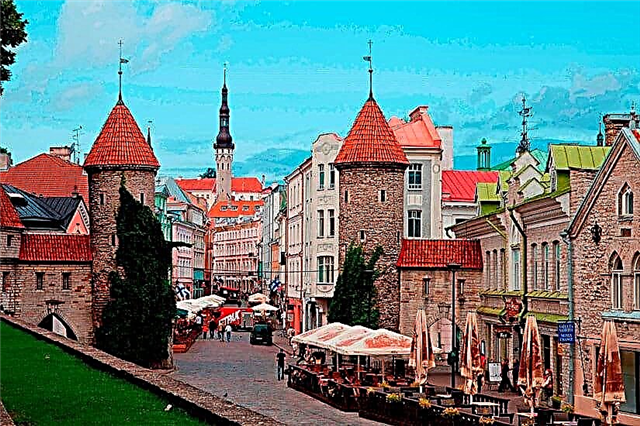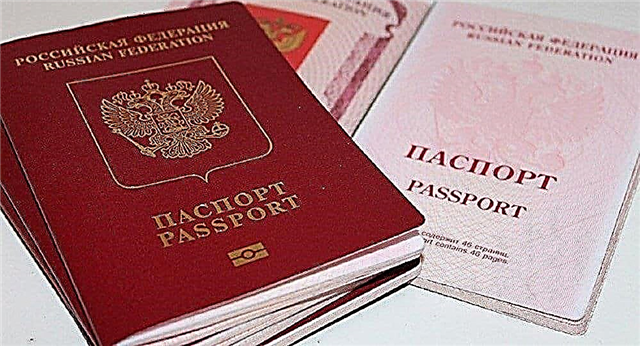If you have been following world news over the past few days, you probably know that the coronavirus, also known as 2019-nCoV or COVID-19, is spreading outside China, in some cases in Italy. The number of people in the country infected with the coronavirus passed the 3,000 mark, and 04.03. In 2021, the death toll has exceeded 100. The current situation is such that a number of small towns in northern Italy are in isolation, as they represent the centers of the beginning of the spread of coronavirus infection.

Which regions of Italy have been affected by the coronavirus
Italy has confirmed that the death toll from the coronavirus reached 107 on Wednesday evening, and the number of infections rose to more than 3,000. All regions in Italy, except Valle d'Aosta, have at least one confirmed case of infection. Most of the victims died from the virus in Lombardy, where the outbreak began. There were also people killed in the Veneto, Emilia-Romagna and Marche regions. Most of the victims were elderly people with chronic lung disease, heart disease, and cancer patients whose immune systems were weakened when they were exposed to the virus.
According to the World Health Organization, more than 80 percent of those infected with the virus have a mild illness with further recovery.
Below is the number of cases of coronavirus infection in the region, including deaths.
The worst situation is in Lombardy. Steps have been taken by the government to prevent further spread of the virus.
The police have cordoned off cities with cases of infection. They promise to impose penalties on people who will try to leave for uninfected areas.
Currently, only 11 cities in the north of the country have adopted these measures, although their number may increase. Ten cities in a small area southeast of Milan in the Lombardy region, and one in the northeastern Veneto region.
| Infected | Cured | The dead | |
|---|---|---|---|
| Lombardy | 1820 | 73 | 250 |
| Piedmont | 82 | ||
| Veneto | 273 | 6 | 9 |
| Emilia-Romagna | 335 | 22 | 9 |
| Sicily | 18 | ||
| Tuscany | 39 | ||
| Liguria | 26 | 1 | |
| Trentino-Alto Adige / South Tyrol | 5 | ||
| Marche | 84 | 4 | |
| Puglia | 9 | 1 | |
| Lazio | 30 | 3 | |
| Campania | 31 | ||
| Abruzzo | 7 | ||
| Calabria | 1 | ||
| Umbria | 9 | ||
| Friuli Venezia Giulia | 18 | ||
| Sardinia | 2 | ||
| Molise | 3 |
Prime Minister Giuseppe Conte said the 50,000 affected residents could face weeks of isolation during the virus's incubation period.
In these cities, regional authorities ordered the closure of bars, restaurants, cinemas, discos and schools. The spread of the virus disrupted the schedule of Milan Fashion Week and Venice Carnival. Serie A matches were canceled. Performances at the famous Teatro alla Scala in Milan had to be canceled as well. Masses in churches in the affected regions have been canceled, and funerals are limited only to the presence of immediate family members.
Comparison of the situation in Italy with the rest of Europe:
Which Italian cities are closed due to coronavirus
The following cities of Lombardy and Veneto are quarantined.
- Bertonico / Lombardy
- Terranova dei Passerini / Lombardy
- Castiglione d'Adda / Lombardy
- Casalpusterlengo / Lombardy
- Castelgerundo / Lombardy
- Somalia / Lombardy
- Codogno / Lombardy
- Fombio / Lombardy
- Maleo / Lombardy
- Euganei / Veneto
- San Fiorano / Lombardy
Bars, restaurants and non-food shops in cities will not work.
According to the WHO, more than 80% of patients infected with the virus mildly recover, while 14 percent have serious illnesses such as pneumonia, which complicates treatment.
Is it possible to travel to Italy during the outbreak of coronavirus
 If you are planning to visit Codogno, Casalpusterlengo or their neighboring towns, we strongly advise you to reconsider your itinerary. However, there is no reason to cancel your trip if you are traveling to the regions of Central and Southern Italy.
If you are planning to visit Codogno, Casalpusterlengo or their neighboring towns, we strongly advise you to reconsider your itinerary. However, there is no reason to cancel your trip if you are traveling to the regions of Central and Southern Italy.
No government around the world gives any official instructions to avoid travel to Rome, in particular due to the coronavirus. The only areas affected by the infection are in the countryside in northern Italy.
Several airlines have restricted or canceled some of their flights to Italy, and a number of countries are asking their citizens to be quarantined as a security measure if they have been in Italy, while other countries are suggesting to avoid non-essential travel, especially to the north of the country.
Currently, you can get more information from your national government, your country's health department, or your embassy. The final decision is ultimately up to you.
Coronavirus in Rome
Following the emergence of coronavirus cases in northern Italy, a total of four people have been quarantined at the Lazzaro Spallanzani Clinical Infectious Diseases Hospital in Rome: two symptomatic Chinese tourists and two Italians who work and study in China. All of them were in isolation until complete recovery and did not infect anyone. Also under suspicion was a family of four from Fiumicino, which was hospitalized with mild symptoms.
As of this morning, 29 people have been hospitalized in Rome, including a Chinese couple, all related to city visits in northern Italy.
What is the situation in Rome during the coronavirus outbreak
 Life in Rome is perfectly normal, but starting this morning (March 5) some small changes can be seen in daily life as the government has developed several nationwide measures to avoid further spread of the virus in areas free of cases.
Life in Rome is perfectly normal, but starting this morning (March 5) some small changes can be seen in daily life as the government has developed several nationwide measures to avoid further spread of the virus in areas free of cases.
These measures will have minimal impact on tourists and include limiting and canceling activities and events that do not maintain a safe distance of 1 meter (approximately 40 inches) between people. Therefore, film screenings, sports matches and races, theatrical performances, concerts were canceled. In particular, several exhibitions in Rome, due to start this week, have been postponed.
The government has asked people over the age of 75 not to leave their homes to avoid unintentional exposure to the virus, as they represent the most vulnerable age group.
All schools and universities in Italy will be closed until March 15th - online training is organized. Public as well as private offices remain open, as do museums and all attractions in Rome and other cities not affected by the virus.
On public transport, you can hear and see information about coronavirus outbreaks, as well as tips to follow to prevent infection: washing your hands frequently, using hand sanitizers, covering your mouth when sneezing, etc.
Where to go for help if you are in Rome and start to feel bad
If you start showing flu symptoms, do not go to the emergency department, call 1500. It is for people with suspected coronavirus. The specialists will assess your situation and refer medical personnel to you if necessary. For any other general non-COVID-19 / Coronavirus health emergencies, call 118.











